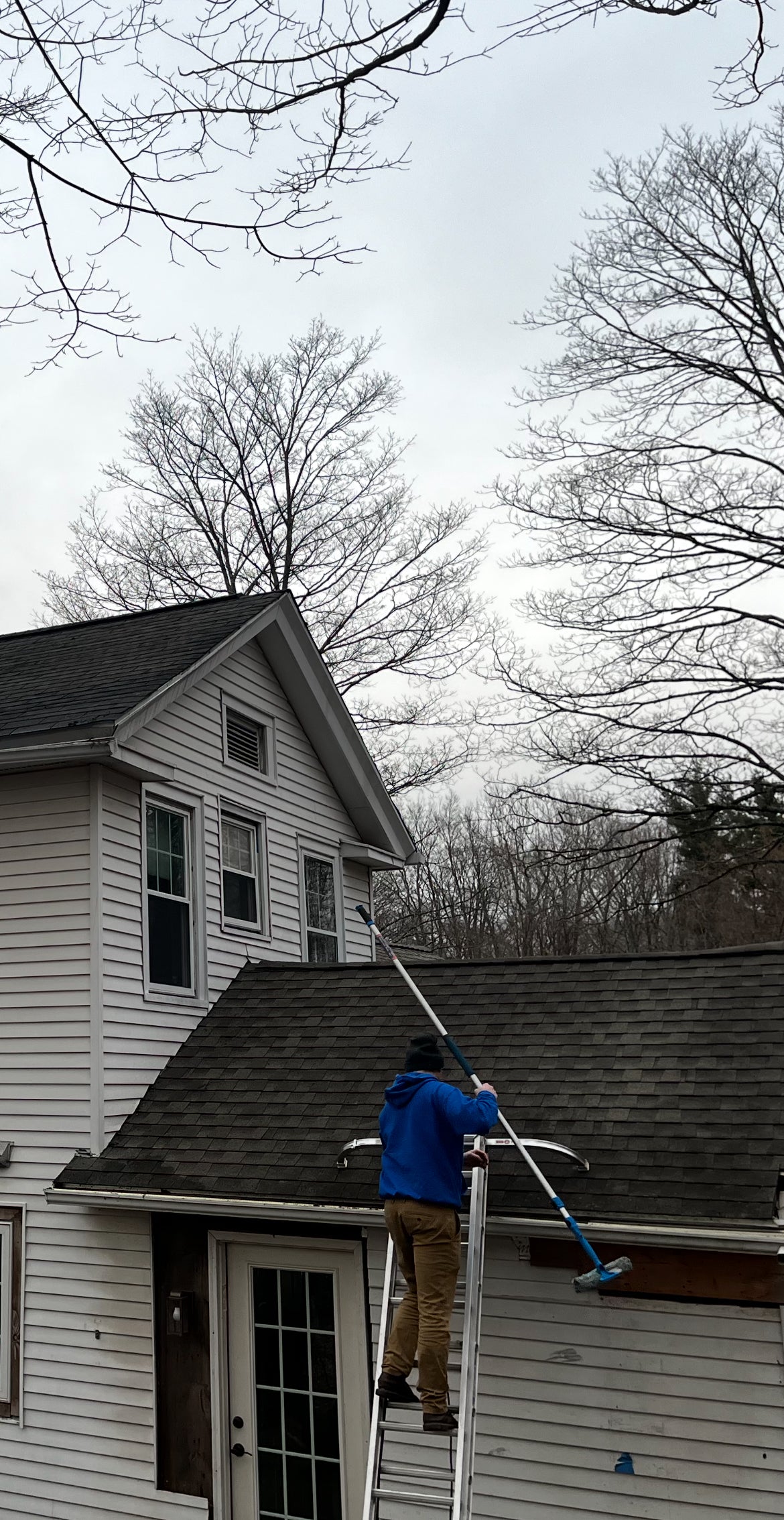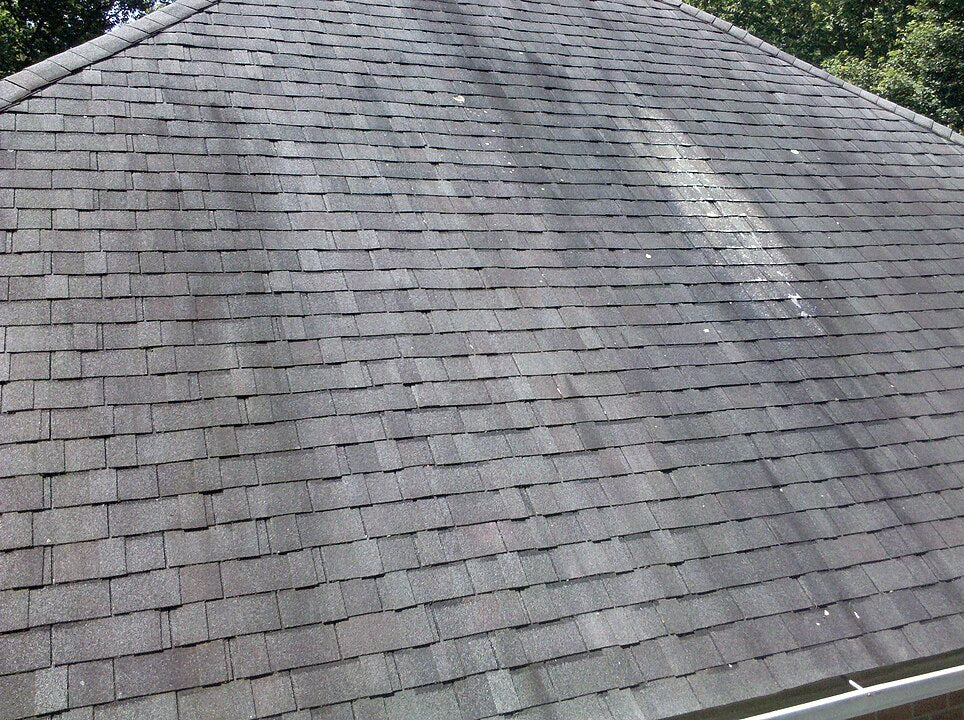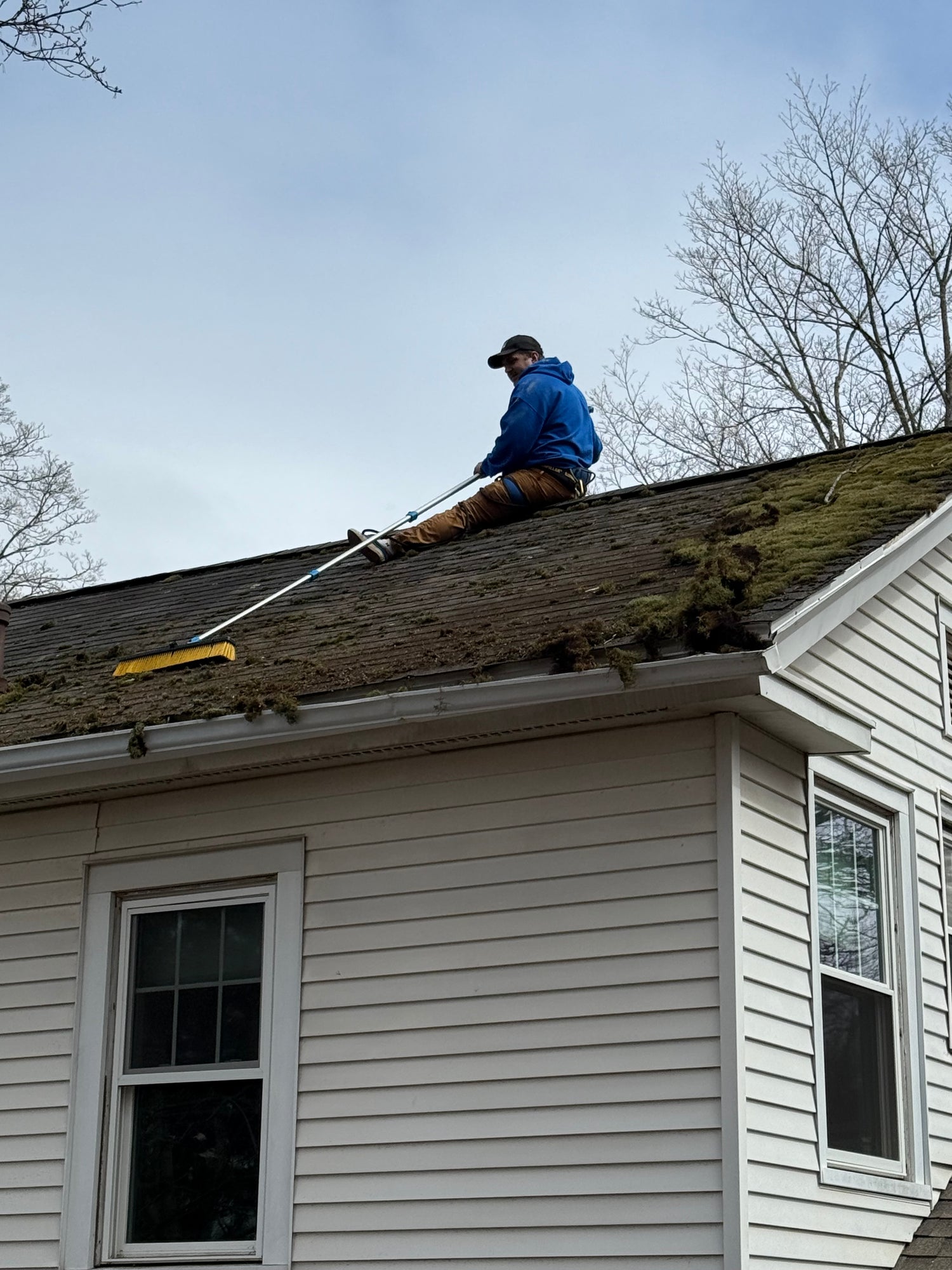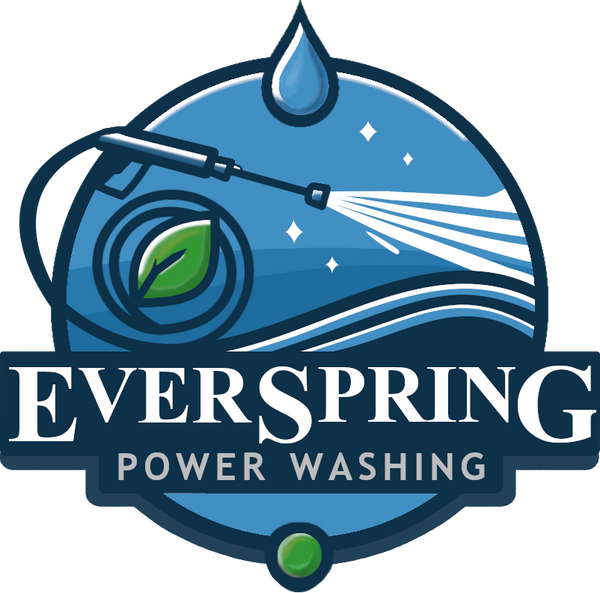
EverSpring Power Washing Cleaning Methods
Please see below for our cleaning processes and quality control.

House Washing - Vinyl Siding
We use a soft wash method to clean residential siding and exterior surfaces. The process consists of spraying a cleaning chemical such as sodium percarbonate which when combined with water forms sodium carbonate and hydrogen peroxide. Often referred to as oxy-clean, the hydrogen peroxide is the cleaning agent and a ecofriendly cleaning chemical. The other common cleaning agent is sodium hypochlorite. Vinyl manufacturer recommendations are for a 1.25% sodium hypochlorite concentration, tri-sodium phosphate-phosphate free, and bleach stable detergent such as Elemonator (alkyldimethylamine oxide). After a dwell time the chemical is rinsed off using a pressure washer with a special low pressure nozzle or a soft wash rinse nozzle. Landscaping is protected through repeated rinsing with water during the cleaning process.

House Washing - Aluminum Siding
Aluminum siding can be tricky to clean. Older aluminum siding that has oxidized if often best cleaned prior to a restoration effort such as painting, although painting some aluminum siding manufacturer brands can void the warranty. In general for heavier cleaning requirements many aluminum manufacturer recommendations' include the following cleaning solution for dirt, mold, moss, algae, and mildew removal:
Mildew, can be removed using soft wash technique and Trisodium Phosphate, sodium Hypochlorite, and laundry detergent. It must be rinsed thoroughly.
Mildew-Removing Recipe*
1/3 cup Laundry Detergent such as Tide®
2/3 cup Trisodium Phosphate
1 Quart Sodium Hypochlorite 5% Solution such as Clorox®
3 Quarts Water
This cleaning formula is similar to vinyl and yields a 1.25% Sodium Hypochlorite cleaning solution.

House Washing - Faux Cedar Shakes
Faux cedar siding similar to mastic by Ply Gem is washed in similar manner to vinyl siding. Mildew can be removed with the following solution. Gently scrub the affected area with a soapy mixture of TSP and Sodium Hypochlorite, then rinse thoroughly.

Artillery Fungus
The presence of persistent, brown to black spots on house siding may be an indication of the presence of the fungus Sphaerobolus stellatus. These brown and black spots, called peridioles or glebal masses, are approximately 2.0 mm (1/12 inch) in diameter and are the dispersal structures of this fungus. The fungus grows in wood mulch and can release spores which can "shoot" into the air as much as 20ft away. The spores have a highly sticky coating which makes them adhere to anything they land on. The best way to keep siding clean is to prevent the fungus from developing as cleaning chemicals are generally ineffective.
Once spores have dried to the surface, removing them is difficult. Peridioles should be removed from affected surfaces with a stiff water spray from a hose or by scrubbing with a wet cloth or stiff brush before they dry. Unfortunately, in most cases this is not practical and removal is usually attempted after the peridioles have dried. When this is the case, they are very difficult to remove and must be physically scrubbed and scraped from the affected surfaces.
EverSpring Power Washing, LLC will do our best to remove these spores when found on siding, however we can't guarantee their removal.

Asphalt Shingle Roof Washing
The roof washing process is similar to the house washing process and the same chemicals can be used for architectural asphalt shingles. GAF Manufacturer recommendation is a 1.25% - 2.5% sodium hypochlorite (SH) solution with tri-sodium phosphate phosphate-free (TSP-PF), and bleach stable detergent. The roof is rinsed, the chemical is applied and allowed to dwell and it is rinsed off. Working gutters are best for this cleaning process. The runoff can be extended away from landscaping using gutter extensions which we provide. Plants and landscaping will be rinsed during the process. Delicate landscaping can be covered with plastic. Eco friendly chemicals can be used such as sodium percarbonate, however higher concentrations are required and possible separate treatments needed to remove stubborn moss and blue green algae.

Blue Green Algae on Roofs (Gloeocapsa Magma)
Blue-green algae, also known as cyanobacteria Gloeocapsa Magma, is a common problem on roofs, often appearing as dark streaks or stains. It's not just a cosmetic issue but can also lead to decreased roof lifespan and potentially impact the effectiveness of solar reflective roofs.

Roof Moss
Roof moss is a serious issue. Moss on a roof can cause damage by trapping moisture, potentially leading to rot and weakening of roofing materials. It can also lift shingles, creating pathways for water to seep into the roof and potentially inside the home. It typically grows in shaded areas under trees or on the north side of the roof where sunlight exposure is limited. Excessive moss growth on roofs can impact your home owners insurance policy. The best way to remove heavy moss immediately is to brush the moss off the roof. Chemical solution can be applied such as sodium hypochlorite which will kill the remaining moss and it will fall off the roof on its own. A zinc sulfate powder can be applied below the roof cap to discourage future moss growth.

Trex Composite Decking
Care and cleaning goes a long way to maintaining the beauty of Trex® deck. For early-generation composite products (like Trex Accents®, Trex Origins®, Trex Contours®, Trex Profiles® or Trex Brasilia®), Trex recommends a semi-annual cleaning with a composite deck cleaner.
If your deck is one of the high-performance product lines from Trex (Trex Transcend®, Trex Enhance® or Trex Select®), soap-and-water cleaning or a gentle pressure washing will do the trick. For more mold and mildew on Trex composite and PVC decks, Trex recommends soft washing with sodium hypochlorite.
Some Trex composite decks may be pressure washed per the manufacturer recommendation.

Chemical Quality Control
To calibrate our proportioner mixing system for bleach we use a LaMotte direct reading titrator (DRT) kit to test the spray solution and verify the correct concentration is used on your property. To verify hydrogen peroxide concentrations we use a time based test strip kit from Bartovation. Solutions are calculated using mixing ratios and set using flow valves on the proportioner and verified via the test kits. The testing is expensive and can be provided specifically for your property upon request, else we defer to our intial calibration method and mixing solutions.
We are one of if not the only soft washing company in CT that uses this method to verify our applied solutions.

Concrete Sealing
We offer concrete surface cleaning and sealing. The process consists of power washing the concrete surface to remove old sealants and clean stains and growth. After 24 hours of dry time a first coat of solvent based acrylic sealer is applied using a specialized sprayer and back rolling technique. A second coat is applied 24 hours later, at this time a non-slip additive (highly recommended) is applied after the first coat cures. The process requires 48 hours of good weather and can be time consuming to apply. The sealant must be applied in the evening when the sun isn't overhead, and temperatures are falling. The sealant should be applied with temperatures between 55F-85F The process could take anywhere from 3 days to two weeks depending on weather patterns. If the concrete has just been poured it's best to wait 28 days before prepping the surface and sealing. We use foundation armor ar350 350 VOC solvent based acrylic sealer.
